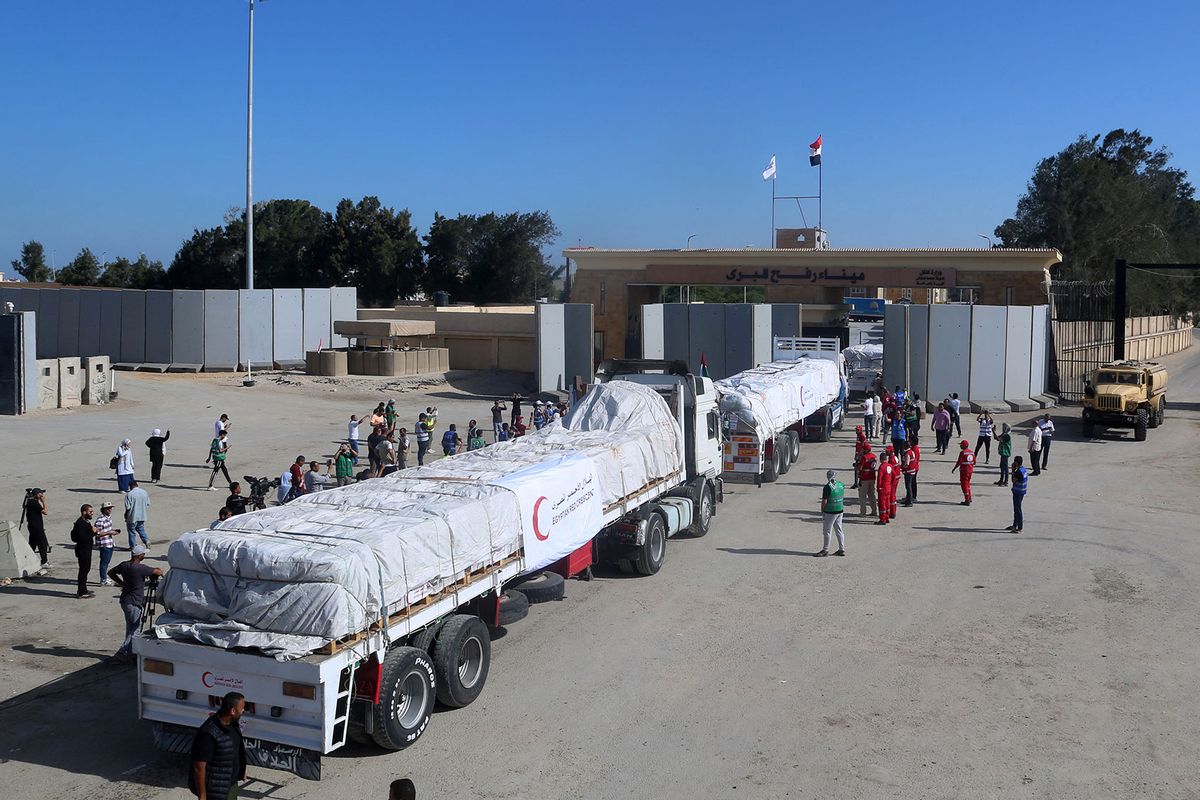The 40th-anniversary remake of Band Aid's Do They Know It's Christmas? charity hit was released on November 25. The new mix, which features vocals recycled from previous versions of the single, still includes the original track's "feed the world" message and lyrics.
The original single was written and released in 1984 in response to harrowing news images of famine in northern Ethiopia. These pictures inspired two pop stars, Bob Geldof and Midge Ure, to bring together some of the biggest names in pop music at the time to record the song.
In the four decades since then, there have been several related Live Aid concerts and re-releases of the single. And the Band Aid Charitable Trust is thought to have raised more than £140 million for long-term development projects and emergency aid.
There has been much debate about some of the stereotypes represented in Band Aid's original lyrics, as well as on whether the song's effect on the charity sector has been positive. But the Band Aid Trust says that the charity has helped as many as 350,000 people in the last seven months alone through a host of projects in Ethiopia, Sudan, Somaliland and Chad. And, without doubt, it raised public awareness of the issues facing Ethiopia in the 1980s.
Yet in terms of the global persistence of famine, things have not got better in the intervening 40 years. There are many regions of the world where people are still suffering from acute food insecurity, defined as hunger so severe that it poses an immediate threat to people's livelihoods and lives.
According to the Global Report on Food Crises, which is produced by the Food Security Information Network and 16 partner agencies, nearly 282 million people in 59 countries and territories worldwide experienced high levels of acute food insecurity in 2023.
The UN's Food and Agriculture Organization (FAO), which provides data on countries requiring external assistance for food, also suggests that 45 countries currently lack the resources to deal with food insecurity. Thirty-three of these countries are in Africa, nine are in Asia, two are in Latin America, and one (Ukraine) is in Europe.
Who needs to be fed?
In some countries, acute hunger has come about because of conflict and civil insecurity, which can cause direct damage to crops and livestock. In Sudan, for example, intense conflict has caused crop production to reduce sharply. Sudan's cereal production in 2023 was estimated to be 46% lower than the output obtained in 2022, and 40% lower than the average of the previous five years.
Conflict can also disrupt transportation routes and make traveling difficult. Markets are thus not easily accessible and become fragmented. So even if food is produced in one part of a country, it cannot be transported to another. This disruption can also mean that access to seeds, fertilizer, animal feed, veterinary medicines and labour are all limited.
The FAO says that escalating civil insecurity and conflict in northern Nigeria are disrupting agricultural activities and markets, with the high cost of inputs like seeds and fertilizer constraining agricultural activity. This led to an 8% reduction in cereal production in 2023 compared with the previous year.
Extreme climate events are another significant cause of food insecurity. In Kenya, for example, 1.7 million people are predicted to be food insecure by January 2025 due to a prolonged and severe drought between 2020 and 2023, floods in 2024, and the below-average rainfall that is now forecast for the end of this year.
This same drought has affected a number of other African countries, too. The result has been a reduction in the amount of food that is available, which has pushed up prices. Maize prices in Zambia, where 5.8 million people are estimated to face acute food insecurity between October 2024 and March 2025, have reached multiple record highs so far this year.
Many countries are facing a combination of issues. For instance, the FAO predicts that food security in Bangladesh will remain fragile into 2025 because economic constraints have been compounded by floods and a typhoon in September that has affected agricultural production.
Typhoon Yagi caused devastation across several south Asian countries and widespread flooding in Myanmar, Laos and Bangladesh. It has left hundreds of thousands of people displaced.
Food insecurity disproportionately affects displaced people. These people often lose assets when they are forced to flee their home and land, which causes a deterioration in living standards. And, as they are also often unemployed or underemployed following displacement, many suffer a significant drop in income.
In Afghanistan, where decades of conflict have converged with the pandemic and natural disasters, the proportion of displaced households that reported having an unstable source of income or no source at all was 78% in 2023. This is higher than the 69% figure reported for ordinary households in Afghanistan.
Many of these issues are destined to continue or even get worse, because climate events, food insecurity and displacements are likely to drive more conflict. The UN, for instance, recognizes the scarcity of resources exacerbated by climate change as one of the main drivers of conflict.
The importance of charitable campaigns like the Band Aid project shouldn't be downplayed. But they are clearly not the cure for the long-term and significant problem of acute hunger. We collectively need to consider better and more equitable ways to make sure we can "feed the world" sustainably.
Rachel Norman, Chair in Food Security & Sustainability, University of Stirling
This article is republished from The Conversation under a Creative Commons license. Read the original article.



Shares